Kate Rauner's Blog, page 88
February 28, 2015
Citizen Scientists Study Mars

NASA’s spacecraft may learn more
Not everyone can be a professional scientist, but citizen scientists continue to contribute.
“An international network of amateur astronomers has spotted what looks like two plumes, or slender, cloudy projections, extending from the surface of Mars, and their professional counterparts have no clear idea of what they might be.” NatGeo
A lawyer in Pennsylvania first spotted the odd plume in 2012. As a member of the ALPO astronomy group, he alerted others who confirmed his sighting. Amateurs in Australia and France spotted the plume, too.
Professional astronomers appreciate the help. “Skilled amateurs often pick up celestial phenomena the pros might miss. Amateurs have been the first to see some supernovae and comets.”
The mysterious plume rose 200 km, well over 100 miles, above the Martian surface. Orbiting spacecraft may have recorded the phenomenon – it will take time to look through all the data. Comments on the article show a lot of interest, with suggested causes from asteroid impacts to static electricity in storms. Amateurs will keep their telescopes on the planet and I expect we’ll learn more.
“We welcome and provide services for all individuals interested in lunar and planetary astronomy. For the novice observer, the ALPO is a place to learn and to enhance observational techniques. For the advanced amateur astronomer, it is a place where one’s work will count. For the professional astronomer, it is a resource where group studies or systematic observing patrols add to the advancement of astronomy.” ALPO astronomy group
Whether you prefer the cosmos or a local beetle, remember, as Isaac Asimov said, the most exciting phrase in science isn’t “eureka,” but “that’s funny…”

February 25, 2015
Let’s Play – a poem by Kate Rauner

American Alligator, another crocodilian
First he tosses a ball
In the water’s trickling flow.
Carries flowers in his teeth;
Beneath the surface, bubbles blow.
Gives his friends a piggyback,
To our surprise it’s quite a show.
Even crocodiles play,
Though why that is, no one knows.
Must it yield greater good?
If you play, why’s that so?
Zookeepers know that animals play, even crocodilians. For biologists, “play must be repeated, pleasurable behavior done for its own sake that’s similar, but not identical to, other behaviors in which the animal regularly engages. It also must be seen when the animal is healthy and not under stress… [This] definition greatly expanded the number of animals that have fun, including turtles and even wasps.” Scientists have tried to find a Darwinian reason, but “animals seem to play because it’s enjoyable, even if it doesn’t have any immediate or tangible benefits.” nationalgeographic.com]
Any kid could have told you that.

February 21, 2015
Cosmic Close Call

A red dwarf might have a planets with moons orbiting it – as in this artist concept
Seventy thousand years ago doesn’t seem so very long – not too long to imagine. Anatomically modern humans – us – date back two hundred thousand years. Hunter-gatherer cultures are at least fifty thousand years old and probably older. We were about to leave Africa and meet our Neanderthal cousins when something astounding happened in the skies above us. A red-dwarf star with its smaller companion swept by the outer reaches of our solar system.
“Passing less than a light-year from Earth, the flyby was the closest stellar near-miss identified so far, scientists reported Tuesday in Astrophysical Journal Letters.” [NatGeo] Seventy thousand years ago it clipped the Sun’s Oort Cloud. No other star will come as close for hundreds of thousands of years.
Scholz’s star moves so fast it’s no longer the closest star to our Sun. The multiple star system Alpha Centauri is our closest neighbor today, only four light-years away. Scholz’s star is already twenty light-years away.
Space is so big I never expected such a close cosmic call within the lifespan of our species. Scholz’s star is too dim to see with the unaided eye today, but it may have flared bright enough for our ancestors to puzzle over its appearance in the sky. I wonder if human beings will be here to see another star flyby. If so, they may be worried. A similarly passing star could send a bevy of comets towards Earth, possibly leading to mass extinctions. Assuming they still have the technology to watch the skies, they’ll have plenty of warning.
The paper explaining this finding is here.

February 18, 2015
It’s Not Written – a poem by Kate Rauner

Ka-Bala
Polished sticks, cards, or bones,
Coins or dice or sacred stones
Allow the mystic gods to choose
The message that you win or lose.
Cast the lots to tell the page,
A sacred text you cannot faze.
Within its pages it will show
All the answers you wish to know.
The I Ching offers sixty-four,
All your questions need no more.
The good news in a Coptic text
Has thirty-seven in the deck.
‘Patience prospers for the brave,
If with a whole heart you gave.’
‘Receive happiness and joy,
To do your utmost won’t annoy.’
Is it persistence towards your goal,
A vision that your mind will hold,
To struggle forward through the strife,
Are these the things that make a life?
Or was it written long ago
With vague meanings none can know
In a tiny book so grand
That put the future in your hand?
Bibliomancy – predicting the future with a book. A palm-sized codex over a thousand years old offered sage advice to Coptic Egyptians. [Live Science] The supplicant is urged to be brave and keep trying, not bad advice in any age. But I like what Shakespeare said in Julius Cesar: ���The fault, dear Brutus, is not in our stars, but in ourselves.���

February 14, 2015
Surviving Climate Change
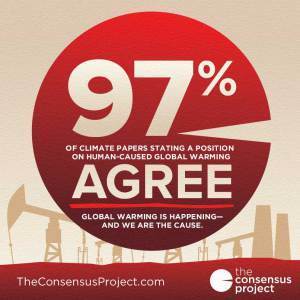 A number of outlets covered this: “[US] Government-backed scientists Tuesday called for research and testing of last-ditch ‘climate interventions’… ‘It is certainly a questionable [approach]. It is certainly dangerous, which is precisely why it needs to be understood. Imposing ignorance on ourselves, because we are worried we don’t want to go there, is irresponsible.'”
A number of outlets covered this: “[US] Government-backed scientists Tuesday called for research and testing of last-ditch ‘climate interventions’… ‘It is certainly a questionable [approach]. It is certainly dangerous, which is precisely why it needs to be understood. Imposing ignorance on ourselves, because we are worried we don’t want to go there, is irresponsible.'”
I am instantly suspicious of anyone, on any topic, who wants to ban research, to impose ignorance on ourselves. We suffer some sad examples in the US – our Congress has passed rules forbidding proposed health care legislation from being evaluated by the budget office, and banned research into deaths due to guns. I suppose it’s an unintended compliment when political groups use pseudoscience to shore up their positions – at least they seem to acknowledge science is important.
But the latest crop of climate change articles does something odd – it combines mitigations like trapping the carbon dioxide from industry with speculative interventions like boosting the reflectivity in Earth’s atmosphere. How does planting trees to absorb carbon dioxide get lumped in with self-levitating aerosols to block sunlight?
The climate has and will continue to change. The current warming trend is, in large part, caused by billions of humans across decades. We must adapt to this reality, limit the damage, and still provide a good life for everyone on this planet. As the poet says, “you have a right to be here.”
I hope that all proposals to improve the future don’t get painted with the same Frankenstein brush. Even geoengineering has uncontroversial ideas, like “cool roofs” on buildings. Climate change is a slow motion disaster, which means we have time to take a deep breath and think.
That said, the writer in me thinks there have to be a lot of stories in geoengineering – and not just from the all-too-standard evil-corporation-dystopia angle.

February 11, 2015
Dance of Fire and Ice – a poem by Kate Rauner
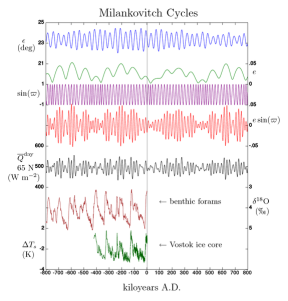
Each variable is a dancer – that would weave a complicated Maypole
Time is an arrow that I ride upon,
Each instant unique in my eyes.
I don’t see the patterns of planets and stars,
The cycles stretched galaxy-wide.
No more than a fly in its three-day life
Can see summer wither to fall,
Can I see the universe unfold
Or the physics of natural law.
The Earth has vast seasons
That spiral through space.
As she tilts on her axis
Her path oscillates.
A hundred thousand years for one dance,
Two hundred hundred another,
Twelve thousand years seems but short spin
For gravity to govern.
Glaciers extend and sea levels fall,
Ice ages retreat, and they rise,
While deep in the oceans in darkness and cold
Unquenchable fires reside.
The weight of the water,
The push of the rock,
Stasis unbalances,
Magma unlocks.
Gases release
To Earth’s atmosphere,
Retain the Sun’s heat
Till the ice disappears.
Volcanoes waltz in tune with the ice,
Choreographed by the skies.
A pattern deduced by human minds
That I can’t see with my eyes.
Two studies, one in the journal Science and the other in Geophysical Research Letters, link underwater volcanic eruptions to Earth’s Ice Ages. ���Surprisingly, the deep seafloor matters in the long-term climate cycle.���
Eons-long variations in Earth’s orbit and tilt trigger Ice Ages which lock ocean water into ice on land, reducing the oceans’ weight until seafloor volcanoes erupt along tectonic spreading ridges. Volcanic gases impact the Earth’s greenhouse heating, which melts ice, adding water to the oceans until their weight suppresses the volcanoes.
���’Both of these data sets have found a signal which is consistent with climate forcing of variations at midocean ridges,’ said Paul Asimow, a geology professor at the California Institute of Technology in Pasadena who was not involved in either study. ‘Now, apart from showing the effect is there, the other part that needs to be teased out is its consequences.’��� news.discovery.com
Wow – I’m a flea riding an elephant.

February 7, 2015
Science versus Human Nature
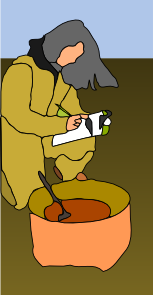 Science builds our modern world because it can overcome intuitions, gut-feels, common sense, and prejudices that happen to be wrong. The scientific method allows us – flawed and limited human beings – to grasp objective reality from the infinitesimal to the cosmic.
Science builds our modern world because it can overcome intuitions, gut-feels, common sense, and prejudices that happen to be wrong. The scientific method allows us – flawed and limited human beings – to grasp objective reality from the infinitesimal to the cosmic.
But human nature fights science.
NPR recently did a piece on an important problem in science – ignoring negative results. Well-known research about bilingualism, for example, exposes “a flaw in how scientific research reaches the mainstream.”
The bilingual hypothesis proposes that speaking multiple languages has benefits to your brain that improve multitasking. Positive results come from a 2009 study. But a researcher involved in the study says there were actually four studies done – one showed a positive effect and the other three showed no effect. Only one was published. Guess which one?
“In fact, one of the authors of the 2009 paper tried to replicate the experiment that found a positive benefit for bilingualism. And that replication failed to work. So in other words, there were four experiments. Three did not show benefits, and they weren’t published. One showed a benefit and was published. But it couldn’t be reproduced. And then the reproduction was not published.”
Any reasonable reading of the results says the hypothesis that bilingualism benefits the brain in this way has been, if not falsified outright, at least not supported.
A well-designed and conducted study that yields negative results – that does not prove its hypothesis – is as valid, important, and useful as a positive study. But no one likes to publish negative studies – it’s not exciting, doesn’t get you tenure, doesn’t make the news, doesn’t fill the room at a conference. Even if the original paper had been withdrawn, not everyone would get the message. It would still be cited and the popular press usually ignores retractions. You and I – interested laymen – would still have the wrong information unless we go out of your way to check in places like RetractionWatch.com.
This problem holds science back and can have a direct impact on our lives. How can medicine advance if only part of the research is published? I’ve posted about this before. There’s a group in the UK calling “for all past and present clinical trials to be registered and their full methods and summary results reported.” I hope they succeed worldwide.
What we need are prestigious journals of negative results. Every major journal should start a subsidiary that does just that.
PS: Sometimes negative results do get into the news. As fivethirtyeight.com concludes, it’s very unlikely that cell phone use increases cancer rates. That’s good to know. I feel better.

February 4, 2015
QED – a poem by Kate Rauner
Bosons carry force
Among the fermions
Flying back and forth –
Colliding with the masses.
All these interactions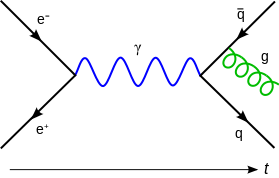
Exchanging many photons
Exceed our calculations –
The math beyond our grasp.
A million million histories
Are not enough to tell
The pathways are a mystery –
Too many to envision.
When all the paths are added
Results become absurd
Infinity of masses –
Of minuses and pluses.
Infinities that run to right
Infinities to left
Yield answers that are finite –
Renormalized at last.
From these results we can’t predict
The math seems somewhat dubious
But once electrons are fixed –
The method is a triumph.
Weak nuclear combines
With electromagnetism
But strong nuclear we find
Evades with gravity.
Strong nuclear is parallel
A similar approach
But gravity is physics hell
Somewhere Einstein chuckles.
I’ve read many attempts to explain quantum physics without the mathematics. I’m currently reading The Grand Design by Hawkings and Mlodinow and I like it a lot. The tone is casual, the diagrams helpful, and the many cartoons are a lighthearted touch. If you’re a non-physicist, read this book, even if you’ve read other explanations. Remember Richard Feynman once wrote “nobody understands quantum mechanics.” But it has never failed a test, and if all that testing says it’s so, then it is so. The quantum world exists outside our intuitive, common-sense experience, so forget all that and follow the proof.

January 31, 2015
Giants in Cold Water – For Whatever Reason
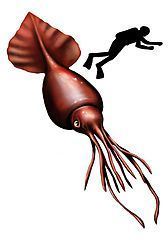
�� Citron / CC-BY-SA-3.0
We humans are fascinated by large animals. We’re actually a pretty large animal ourselves. Even if you ignore microbes and only consider the animals we can see, most are small. There are over 350,000 described species of beetles, for example, and we tower over beetles.
“For well over a century, zoologists and explorers to the poles have observed that organisms there can reach remarkably large sizes.” For mammals, it’s been proposed (Bergmann, 1847; Watt et al., 2010) that larger individuals are favored in cold climates since their smaller surface-area-to-volume ratios more easily maintain high, stable body temperatures – but that doesn’t explain giant cold-blooded creatures.
Before trying to explain a phenomenon, it’s useful to first consider if it really exists. There haven’t been rigorous studies to tell us if gigantism in polar and abyssal (deep cold) waters is a general trend of if we humans simply notice large animals.
As you might expect, the situation is not clear.
While you may think of polar bears or the extinct Ice Age megafauna, a recent article in The Journal of Experimental Biology looked at “organisms from the marine environment because the terrestrial Antarctic fauna is comparatively sparse, whereas the polar oceans are home to a fauna that is rich and often strange.” Giant marine animals include mollusks, crustaceans, worms, sponges, and trilobites (trilobites are a favorite of mine – alas, extinct but well known from fossils).
Some creatures seem to trend in the opposite direction, to smaller sizes in cold water. Dissolved oxygen concentration, which is higher in colder waters, correlates with size at certain taxonomical levels. Aqueous levels of calcium carbonate seem to play a role – sometimes.
“Despite a broad search for explanatory mechanisms, no consensus has emerged… Multiple factors probably contribute to gigantism in taxon-dependent ways. This prognosis could be viewed as gloomy, but it likely reflects the messy, historical, contingent nature of biology better than any simpler alternative.” Angilletta et al., 2004
So the story remains as murky as the oceans’ abyssal depths. But I’m only human and I notice the big guys – the Antarctic colossal squid (for example) is awesome, however it got so big.

January 28, 2015
Human Hands – a poem by Kate Rauner
Touch your finger to your thumb.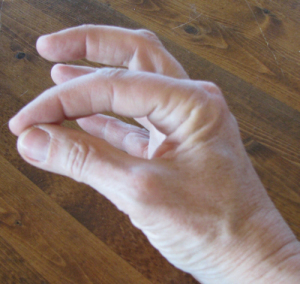
Eons live in what you’ve done.
Million of years would pass
Before we had tools to last
Long enough to find in digs,
Stone instead of bone or twigs.
What good would be our human brains
Without our deftly human hands?
Three million years ago a touch
Could convey to others much.
The grip that once clung to a tree
Joins me to you,
And you to me.
We rightly treasure our magnificent brains – but touch defined what it means to be human, or at least hominid, for millions of years.
livescience.com nationalgeographic.com





